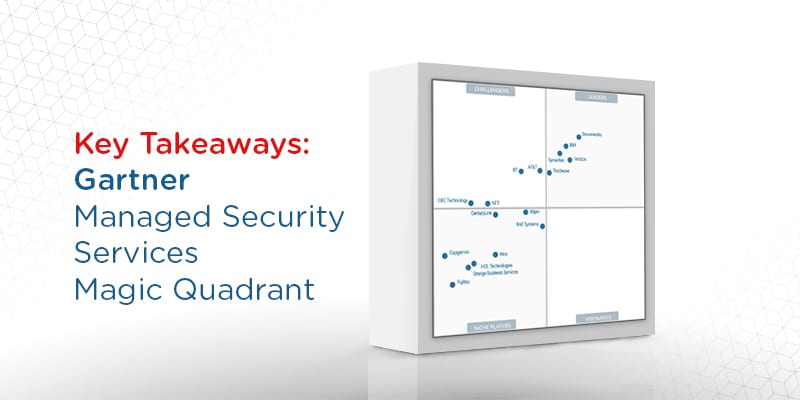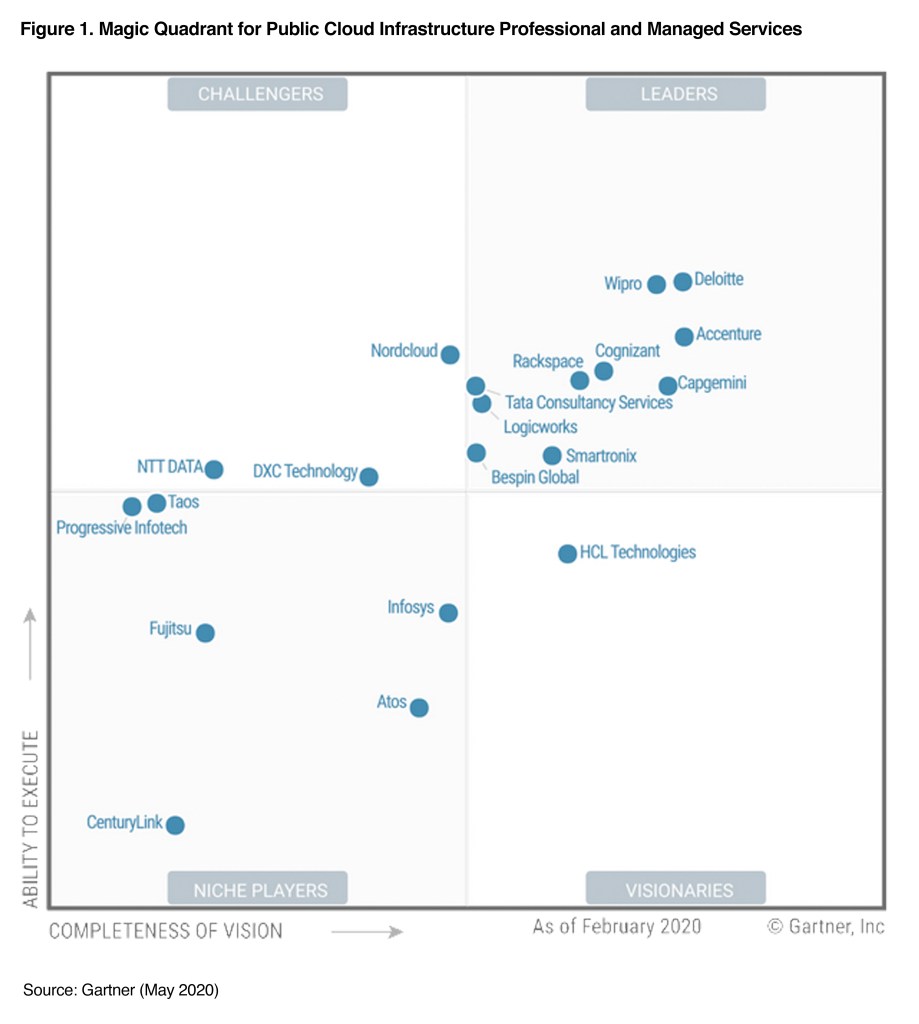¹Gartner, Mid-Market Context: ‘Magic Quadrant for Connection Collaboration Platforms’, Joe Mariano, 10 July 2018. Gartner does not endorse any vendor, product or service depicted in its research publications, and does not advise technology users to select only those.
Gartner Magic Quadrant Cloud Majority are adopting Content Collaboration Platforms Gartner has stated in its recent Magic Quadrant for Content Collaboration Platforms (read the full report ) that 80% of large and midsize organizations in mature regions will have deployed one or more content collaboration platform (CCP) products. Managed File Transfer Gartner Magic Quadrant 2017 Axway Majority are adopting Content Collaboration Platforms Gartner has stated in its recent Magic Quadrant for Content Collaboration Platforms (read the full report ) that 80% of large and midsize organizations in mature regions will have deployed one or more content collaboration platform (CCP) products. A number of products included in the Gartner Managed File Transfer Magic Quadrant fall into this category. EFSS technology specialises in secure ad-hoc or person-to-person sharing of data, but not necessarily automated file transfer. This, in my opinion, is fundamental to MFT.
The managed file transfer (MFT) industry has a players ranging from big-name tech titans to up-and-coming next-generation cloud-based vendors. Below is a list of some, but not all, players in this industry and a brief description.
RELATED: File transfers go to the cloudA
MORE CLOUD: 12 free cloud storage options
Axway
A leading competitor in the managed file transfer industry, Axway says it specializes in not only B2B (business to business) MFT, but also A2A (application to application), and ad hoc transfers. Axway is a French company that is popular in the U.S. enterprise market, priding itself on baked-in visibility and monitoring tools that provide both technical and business-oriented dashboards to track which data is being transferred. Axway recently beefed up its security policies too with its acquisition of Vordel, which specializes in API security compatibility for mobile and cloud services. This could fit in with Axway's Communities service, in which businesses can set up policies for different groups within an enterprise.
More information: Axway
Citrix ShareFile
Citrix, a trusted name in IT management tools, has its own line of file transfer products, headlined by ShareFile, which is what the company calls a 'follow-me data' tool. ShareFile allows users to store and synchronize files across multiple devices and platforms, from mobile, tablet and desktop, with optional integration with Microsoft Outlook and centralized management, such as running audit reports, conducting remote wipes and linking in with an existing active directory. It supports transfers of files up to 100GB and also features Storage Zones, which is basically a fancy way of Citrix saying data can be stored on a customer's premise, or in a Citrix cloud. Last week, the company announced a partnership with NetApp where that company's storage operating system, NetApp Data OnTap 8, will be optimized to run as the on-premise platform in ShareFile environments.
More information: Citrix ShareFile
IBM
Seen by some as the market leader in this category for enterprise MFT, IBM's product is based on the Sterling Managed File platform. Optimized for high-volume traffic within and between enterprises, IBM's MFT is a portfolio that includes additional bolt-on features. WebSphere MQ, for example, is an optional file transfer automation software, while File Gateway allows for integration with enterprise resource planning (ERP) and business process management (BPM) platforms. IBM also has a series of customizable Web-based interfaces, and a control center for IT management of the system.
More information: IBM Sterling MFT
Ipswitch File Transfer
Perhaps no company better epitomizes the transitions occurring in this broader industry better than Ipswitch. The company has a history of competing in the MFT space, but has recently launched a new, completely cloud-based version of its file transfer tool named MOVEit. It supports system-to-system, person-to-person file transfers, all with fast on-boarding and the ability to dynamically scale resources as needed through the cloud. Ipswitch has complementary tools such as MessageWay, which integrates with existing message platforms, and for customers that want an on-premise tool instead, Ipswitch sells its WS_FTP file transfer server.
More information: Ipswitch File Transfer
Tibco
Tibco's file transfer system is part of the company's broader strategy around information management. Its MFT line includes both platform and Internet servers, for on-premise or public Internet-facing MFT applications respectively, plus it includes Command Center, a centralized dashboard with reporting and auditing features. Tibco's Slingshot product is also used on-premise as an integration tool with Microsoft Outlook and other messaging platforms that provides compression and encryption for files that will be transferred.
More information: Tibco MFT
YouSendIt
YouSendIt represents the up-and-coming crop of startup competitors looking to take on the legacy names in this business. A cloud-based service, YouSendIt emphasizes easy onboarding, including a free 14-day trial, and access to YouSendIt services from desktops, tablets and mobile devices. File transfers are capped at 2MB, but the service provides for synchronization of files across devices. An enterprise-geared product named Workstream starts at $12.99 per month for up to 50 users, while a premium version of that with customized pricing includes active directly integration, single sign-on and monitoring and management tools.
More information: YouSendIt
Network World staff writer Brandon Butler covers cloud computing and social collaboration. He can be reached at BButler@nww.com and found on Twitter at @BButlerNWW.
This story, '6 Tools to Manage Large File Transfers' was originally published by Network World.
Next read this:
French-registered, US-based software developer Axway has acquired Santa Clara, Calif.-based Syncplicty.

The acquisition is the latest chapter for the enterprise file sync and share (EFSS) vendor, which the company then known as EMC acquired in 2012 and sold to global investment firm Skyview Capital in 2015.
Founded in 2007, Syncplicity counts more than 25,000 business and individual customers across a variety of verticals.
Axway, based in Scottsdale, Ariz., is a former unit of French company Sopra Steria. The Paris-based information technology services group spun off Axway in 2011 but retains a 33.52 percent interest in the company, which has more than 11,000 customers worldwide.
Terms of the all-cash deal were not disclosed.
Last year, Axway acquired Appcelerator, a Mountain View, Calif.-based mobile app development platform startup founded in 2006.
'Winning Combination'
In a statement on the company website, officials described Syncplicity and Axway as a 'winning combination.' The acquisition advances Axway’s commitment to the digital workplace by enabling workers 'to securely share, synchronize and collaborate on files anywhere, anytime, from any device,' they continued.

Axway CEO Jean-Marc Lazzari said Syncplicty compliments Axway AMPLIFY, the data integration and engagement platform the company introduced last November. AMPLIFY provides a unified, secure environment in the cloud and on-premises where digital teams can create, run and scale API-enabled services.
With Syncplicity, Axway now offers enterprises a hybrid cloud service where EFSS and Managed File Transfer (MFT) interactions can be 'leveraged seamlessly together to get more business value from their data,' he said.
Syncplicity not only strengthens the AMPLIFY platform but provides an API that will developer communities to embed EFSS services within their apps and processes, he said.
Last November, Gartner named Axway a Leader in its 2016 Magic Quadrant for Full Life Cycle API Management. It was the third consecutive year it made the leaders quadrant in the report, previously known as the Application Services Governance Magic Quadrant.
Death of EFSS?
The acquisition confirms a prediction Gartner analysts Monica Basso, Karen A. Hobert and Jeffrey Mann made in the EFSS Magic Quadrant they wrote last summer. They estimated 70 percent of existing EFSS vendors will cease to exist by 2018.
Many EFSS companies with either be acquired or go out of business, they predicted. Surviving firms will offer one of two kinds of solutions: either empowering the digital workplace or modernizing corporate infrastructures.
When asked about the prediction, Syncplicity CEO Jon Huberman told CMSWire, 'We're in the digital transformation business. We are not trying to be ECM 3.0.' Based on the company's new ownership, that appears to be true.
¹Gartner, Mid-Market Context: ‘Magic Quadrant for Connection Collaboration Platforms’, Joe Mariano, 10 July 2018. Gartner does not endorse any vendor, product or service depicted in its research publications, and does not advise technology users to select only those.
The managed file transfer (MFT) industry has a players ranging from big-name tech titans to up-and-coming next-generation cloud-based vendors. Below is a list of some, but not all, players in this industry and a brief description.
RELATED: File transfers go to the cloudA
MORE CLOUD: 12 free cloud storage options
Axway
A leading competitor in the managed file transfer industry, Axway says it specializes in not only B2B (business to business) MFT, but also A2A (application to application), and ad hoc transfers. Axway is a French company that is popular in the U.S. enterprise market, priding itself on baked-in visibility and monitoring tools that provide both technical and business-oriented dashboards to track which data is being transferred. Axway recently beefed up its security policies too with its acquisition of Vordel, which specializes in API security compatibility for mobile and cloud services. This could fit in with Axway's Communities service, in which businesses can set up policies for different groups within an enterprise.
More information: Axway
Citrix ShareFile
Citrix, a trusted name in IT management tools, has its own line of file transfer products, headlined by ShareFile, which is what the company calls a 'follow-me data' tool. ShareFile allows users to store and synchronize files across multiple devices and platforms, from mobile, tablet and desktop, with optional integration with Microsoft Outlook and centralized management, such as running audit reports, conducting remote wipes and linking in with an existing active directory. It supports transfers of files up to 100GB and also features Storage Zones, which is basically a fancy way of Citrix saying data can be stored on a customer's premise, or in a Citrix cloud. Last week, the company announced a partnership with NetApp where that company's storage operating system, NetApp Data OnTap 8, will be optimized to run as the on-premise platform in ShareFile environments.
More information: Citrix ShareFile
IBM
Seen by some as the market leader in this category for enterprise MFT, IBM's product is based on the Sterling Managed File platform. Optimized for high-volume traffic within and between enterprises, IBM's MFT is a portfolio that includes additional bolt-on features. WebSphere MQ, for example, is an optional file transfer automation software, while File Gateway allows for integration with enterprise resource planning (ERP) and business process management (BPM) platforms. IBM also has a series of customizable Web-based interfaces, and a control center for IT management of the system.
More information: IBM Sterling MFT

Ipswitch File Transfer
Perhaps no company better epitomizes the transitions occurring in this broader industry better than Ipswitch. The company has a history of competing in the MFT space, but has recently launched a new, completely cloud-based version of its file transfer tool named MOVEit. It supports system-to-system, person-to-person file transfers, all with fast on-boarding and the ability to dynamically scale resources as needed through the cloud. Ipswitch has complementary tools such as MessageWay, which integrates with existing message platforms, and for customers that want an on-premise tool instead, Ipswitch sells its WS_FTP file transfer server.
More information: Ipswitch File Transfer
Tibco
Tibco's file transfer system is part of the company's broader strategy around information management. Its MFT line includes both platform and Internet servers, for on-premise or public Internet-facing MFT applications respectively, plus it includes Command Center, a centralized dashboard with reporting and auditing features. Tibco's Slingshot product is also used on-premise as an integration tool with Microsoft Outlook and other messaging platforms that provides compression and encryption for files that will be transferred.
More information: Tibco MFT
YouSendIt
YouSendIt represents the up-and-coming crop of startup competitors looking to take on the legacy names in this business. A cloud-based service, YouSendIt emphasizes easy onboarding, including a free 14-day trial, and access to YouSendIt services from desktops, tablets and mobile devices. File transfers are capped at 2MB, but the service provides for synchronization of files across devices. An enterprise-geared product named Workstream starts at $12.99 per month for up to 50 users, while a premium version of that with customized pricing includes active directly integration, single sign-on and monitoring and management tools.
More information: YouSendIt
Network World staff writer Brandon Butler covers cloud computing and social collaboration. He can be reached at BButler@nww.com and found on Twitter at @BButlerNWW.
This story, '6 Tools to Manage Large File Transfers' was originally published by Network World.
Next read this:
French-registered, US-based software developer Axway has acquired Santa Clara, Calif.-based Syncplicty.
The acquisition is the latest chapter for the enterprise file sync and share (EFSS) vendor, which the company then known as EMC acquired in 2012 and sold to global investment firm Skyview Capital in 2015.
Founded in 2007, Syncplicity counts more than 25,000 business and individual customers across a variety of verticals.
Axway, based in Scottsdale, Ariz., is a former unit of French company Sopra Steria. The Paris-based information technology services group spun off Axway in 2011 but retains a 33.52 percent interest in the company, which has more than 11,000 customers worldwide.
Terms of the all-cash deal were not disclosed.
Last year, Axway acquired Appcelerator, a Mountain View, Calif.-based mobile app development platform startup founded in 2006.
'Winning Combination'
In a statement on the company website, officials described Syncplicity and Axway as a 'winning combination.' The acquisition advances Axway’s commitment to the digital workplace by enabling workers 'to securely share, synchronize and collaborate on files anywhere, anytime, from any device,' they continued.
Axway CEO Jean-Marc Lazzari said Syncplicty compliments Axway AMPLIFY, the data integration and engagement platform the company introduced last November. AMPLIFY provides a unified, secure environment in the cloud and on-premises where digital teams can create, run and scale API-enabled services.
With Syncplicity, Axway now offers enterprises a hybrid cloud service where EFSS and Managed File Transfer (MFT) interactions can be 'leveraged seamlessly together to get more business value from their data,' he said.
Syncplicity not only strengthens the AMPLIFY platform but provides an API that will developer communities to embed EFSS services within their apps and processes, he said.
Last November, Gartner named Axway a Leader in its 2016 Magic Quadrant for Full Life Cycle API Management. It was the third consecutive year it made the leaders quadrant in the report, previously known as the Application Services Governance Magic Quadrant.
Death of EFSS?
Managed File Transfer Gartner Magic Quadrant 2019

Managed File Transfer Gartner Magic Quadrant
The acquisition confirms a prediction Gartner analysts Monica Basso, Karen A. Hobert and Jeffrey Mann made in the EFSS Magic Quadrant they wrote last summer. They estimated 70 percent of existing EFSS vendors will cease to exist by 2018.
Many EFSS companies with either be acquired or go out of business, they predicted. Surviving firms will offer one of two kinds of solutions: either empowering the digital workplace or modernizing corporate infrastructures.
When asked about the prediction, Syncplicity CEO Jon Huberman told CMSWire, 'We're in the digital transformation business. We are not trying to be ECM 3.0.' Based on the company's new ownership, that appears to be true.
